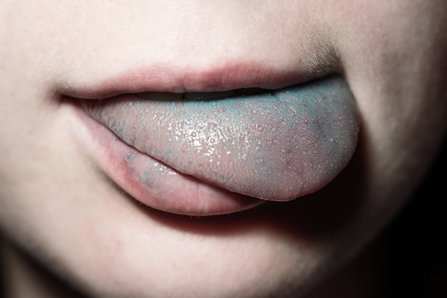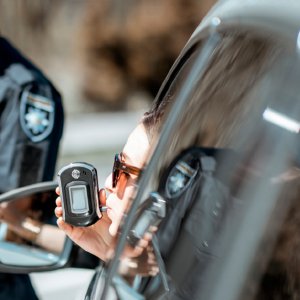Blue Dye? Is This the Way to Stop Drug Abuse?

Recently, a panel of experts for the Food and Drug Administration rejected a proposal from Intellipharmaceutics International for the sale of a new formulation of an extended-release form of oxycodone. The new pill, tentatively named Rexista, contains a blue dye that is released if someone tries to misuse the drug by crushing it so they can snort it, or if they chew it to release all its effects at once. The company felt the blue dye that stains the mouth or nose of a person abusing it would serve as a warning of drug misuse to family and friends and a deterrent to abuse.
The panel of experts did not agree. With a vote of 22 to 1, they rejected the proposed drug. The FDA normally abides by the recommendation of this panel.
What reasoning did the panel offer for the rejection? Concerns were raised about the safety of the blue dye, and it was not felt that the presence of dye offers a convincing deterrent to abuse. Most panel members felt that the pharmaceutical company had not completed enough studies on the effectiveness of this system in deterring abuse. They also felt that the company had not proven that those who are addicted would be deterred from simply liquifying and injecting the pills.
Who Might Be Deterred by Blue Dye?
Certainly not a person who is thoroughly addicted. According to Fox News, some panel members thought that having one’s mouth or nose dyed blue might even become popular among those who are addicted. However, a young person who steals a few pills from his medicine cabinet at home might be found out by his parents if his mouth is blue. If that young person simply swallows the pills, however, then there would be no tell-tale signs.
Is This the Best Method of Preventing Drug Use?
You have to ask yourself if this is the method we want to use to prevent misuse of and addiction to pain medication. It is very indirect, relying on a blue dye to give away the drug user’s secrets. Direct methods would include:
- Re-educating doctors, dentists and others who can prescribe pain medication on using non-drug alternatives first, knowing how to identify drug-seeking behavior or addiction and understanding how to help the addicted patient. Re-education needs to be thorough enough that their prescribing practices actually change.

- Revising emergency room procedures to protect and support ER practitioners who may be verbally or even physically attacked by a person who demands pain medication—or who may keep a practitioner from helping those who are badly injured because of the chaos and disturbance they create.
- Educating families that all medications must be locked up every minute that they are not in use. This includes drugs at the bedside of a sick, injured or terminally ill person.
- Providing effective drug education and prevention classes to every student, every year, only utilizing programs with a proven track record of reducing the use of drugs and alcohol.
It’s obvious that changing the pattern of this country’s drug abuse problem will heavily involve education at all levels. Community support of drug-free and alcohol-free events support these re-education efforts and help spread the message that success doesn’t involve substance abuse.
The other vital component is, of course, effective rehabilitation for those who are addicted. Real rehab that lasts takes longer than 30 days and does not rely on the use of medications that are themselves addictive like Suboxone and methadone. It’s also necessary to address the reasons a person started using drugs in the beginning.
In so many cases, reaching for drugs looked like a solution for shyness, trauma, an inability to cope with problems, stress from school or home situations or physical or emotional abuse and similar influences. Sometimes it’s just a young person who’s bored, who wants some adventure and sees a group of kids who seem to be having fun while they get drunk or stoned. He wants to have fun too so he just joins in. For some people, this move is just youthful experimentation but for others, it’s the first step of their addictions. There’s no way of knowing which way it’s going to go.

When that first step ends in addiction, their return to lasting sobriety requires that they repair the damage done by addiction and gain the skills needed to succeed in life. At that point, drugs no longer look like a solution. That’s the philosophy of the Narconon drug rehabilitation program that has been helping the addicted build new, sober lives for more than 50 years. Call us at 1-800-737-5250 to learn more.


 ®
®